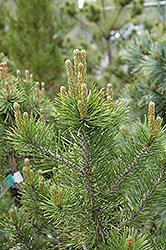Fri & Sat 8am - 8pm
Sun 8am - 7pm
Anytown, USA 12345
fax: 261.787.0463
e-mail: info@successgc.com


Plant Finder

Height: 60 feet
Spread: 25 feet
Sunlight:
![]()
Hardiness Zone: 3a
Other Names: Pinus contorta ssp. Murrayana
Description:
A tall, narrow evergreen of the Cascade Mountains, that is very slow growing; this is not the coastal variety, it is more cold tolerant , less heat tolerant and doesn't like salt spray
Ornamental Features
Murrayana Lodgepole Pine is primarily valued in the landscape for its distinctively pyramidal habit of growth. It has grayish green evergreen foliage. The needles remain grayish green throughout the winter. The shaggy brick red bark adds an interesting dimension to the landscape.
Landscape Attributes
Murrayana Lodgepole Pine is an open evergreen tree with a strong central leader and a distinctive and refined pyramidal form. Its average texture blends into the landscape, but can be balanced by one or two finer or coarser trees or shrubs for an effective composition.
This is a relatively low maintenance tree. When pruning is necessary, it is recommended to only trim back the new growth of the current season, other than to remove any dieback. It has no significant negative characteristics.
Murrayana Lodgepole Pine is recommended for the following landscape applications;
- Vertical Accent
- Windbreaks and Shelterbelts
Planting & Growing
Murrayana Lodgepole Pine will grow to be about 60 feet tall at maturity, with a spread of 25 feet. It has a high canopy of foliage that sits well above the ground, and should not be planted underneath power lines. As it matures, the lower branches of this tree can be strategically removed to create a high enough canopy to support unobstructed human traffic underneath. It grows at a slow rate, and under ideal conditions can be expected to live to a ripe old age of 100 years or more; think of this as a heritage tree for future generations!
This tree should only be grown in full sunlight. It prefers dry to average moisture levels with very well-drained soil, and will often die in standing water. It is considered to be drought-tolerant, and thus makes an ideal choice for xeriscaping or the moisture-conserving landscape. It is not particular as to soil type or pH. It is highly tolerant of urban pollution and will even thrive in inner city environments. This species is native to parts of North America.
